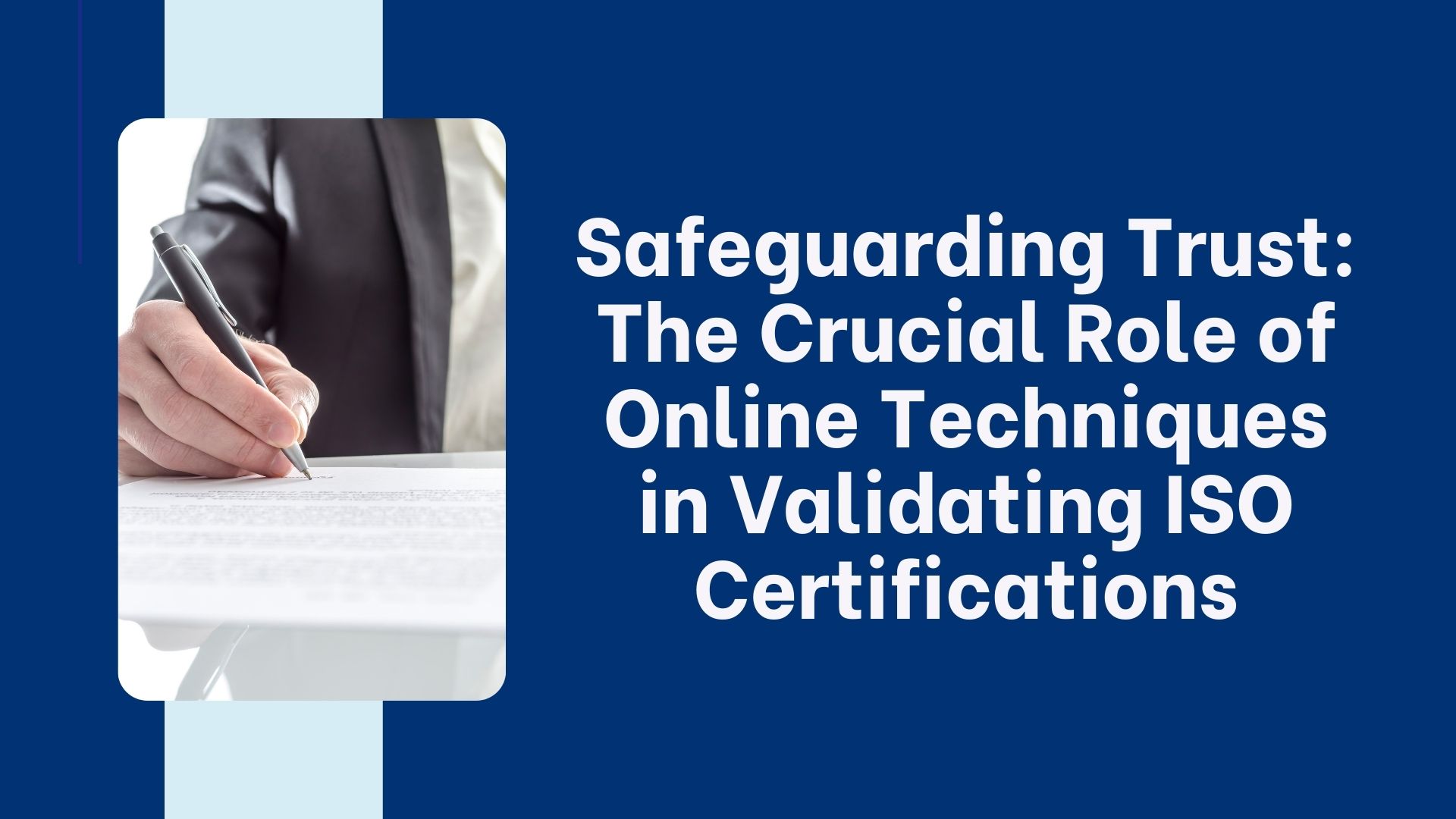In the interconnected global landscape, trust serves as the cornerstone of successful business relationships. Central to this trust are the certifications issued by the International Organization for Standardization (ISO), emblematic of adherence to stringent quality standards across industries. However, the proliferation of counterfeit ISO certificates has prompted the need for robust verification methods to authenticate these vital credentials.
The contemporary era’s technological advancements have ushered in a new frontier for confirming the integrity of ISO certificates, introducing innovative online techniques that offer resilient solutions for validation. Embracing technology, transparency, and rigorous verification processes. These methods stand as bulwarks against fraudulent activities, ensuring the legitimacy of ISO certifications.
Grasping the Significance of ISO Certifications:
ISO certifications represent a commitment to excellence, efficiency. And consistency in various business practices, encompassing quality management, environmental sustainability, information security, and more. These certifications serve not only as badges of honor for organizations but also as catalysts for building trust among consumers and partners who prioritize reliability.
Nonetheless, amidst the increasing value placed on ISO certifications, the prevalence of fake or outdated certificates poses a significant challenge. Such deceitful practices undermine confidence in the validity of these certifications, potentially compromising the credibility of businesses that rely on them.
Challenges in Verification:
Traditional methods of verifying ISO certificates involved manual checks and correspondence with certification bodies, often resulting in time delays and inefficiencies. Moreover, the sophistication of counterfeit certificates made it arduous to distinguish between authentic and forged documents, amplifying the risks associated with false claims.
Unveiling the Power of Online Techniques:
The evolution of digital solutions has transformed the landscape of ISO certificate verification. Online platforms now offer cutting-edge tools and databases that facilitate swift and accurate validation. Harnessing technologies like blockchain, secure databases, and AI-powered algorithms, these platforms ensure real-time authentication of ISO certificates.
Blockchain Revolution:
Blockchain technology, renowned for its immutable and transparent nature, has emerged as a revolutionary force in certificate validation. By storing certificate details in a decentralized and tamper-proof ledger, blockchain guarantees the integrity of information, rendering certificates virtually tamper-proof and resistant to forgery.
Secure Databases:
Dedicated online databases maintained by certification bodies or authorized platforms serve as centralized repositories of valid ISO certificates. These repositories empower stakeholders to effortlessly access and verify the legitimacy of certificates, streamlining the verification process and fostering trust.
AI-Driven Validation:
Artificial intelligence and machine learning algorithms play a pivotal role in scrutinizing certificate data for irregularities. These sophisticated algorithms swiftly identify inconsistencies or anomalies within certificates, red-flagging potential fraudulent documents for thorough examination.
Future Outlook and Advantages:
The integration of online techniques for ISO certificate validation heralds a promising future. These methods not only enhance efficiency and precision but also engender trust among stakeholders by affirming the genuineness of certifications. Businesses stand to gain from diminished risks linked to counterfeit certificates, fostering seamless collaborations and procurement endeavors.
Furthermore, the continual evolution of technology holds the promise of even more robust verification methodologies. Innovations such as advanced encryption, biometrics. And decentralized identity solutions harbor potential for further fortifying the validation process against increasingly sophisticated fraudulent attempts.
Conclusion:
In the digital age, the credibility of ISO certifications hinges on the ability to swiftly and reliably verify their authenticity. Online techniques employing blockchain, secure databases, and AI-driven verification mechanisms offer potent solutions to confront the escalating challenges posed by counterfeit certificates.
As businesses and consumers alike increasingly rely on these certification to make informed decisions, the imperative of ensuring the trustworthiness of ISO certificates through innovative online verification techniques cannot be overstated. Embracing these advancements, stakeholders can cultivate a marketplace founded on transparency, credibility. And assured integrity, fostering enduring trust among all parties involved.
In the landscape of modern commerce, the trust engendered by ISO certifications holds immense value. As pillars of credibility and reliability, these certifications signify a commitment to excellence and adherence to globally recognized standards. However, the proliferation of counterfeit certificates has posed a significant challenge, demanding innovative solutions to fortify their authenticity.
The advent of online techniques has provided a beacon of hope in this pursuit of ensuring the veracity of ISO certifications. Technologies like blockchain, secure databases, and AI-driven validation have revolutionized the verification process, offering robust mechanisms to thwart fraudulent attempts and maintain the integrity of certifications.
